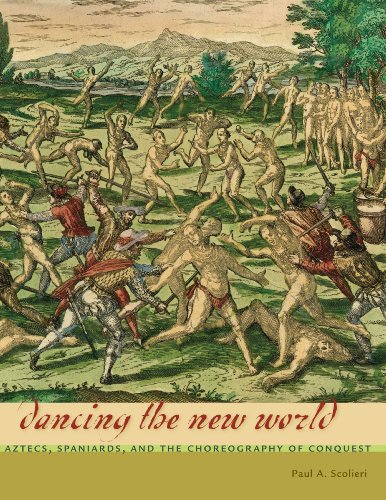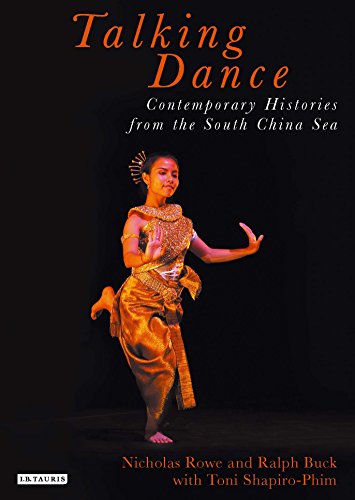Dancing the New World: Aztecs, Spaniards, and the by Paul A. Scolieri

By Paul A. Scolieri
From Christopher Columbus to “first anthropologist” Friar Bernardino de Sahagún, 15th- and sixteenth-century explorers, conquistadors, clerics, scientists, and tourists wrote concerning the “Indian” dances they encountered during the New international. This was once very true of Spanish missionaries who intensively studied and documented local dances in an try to determine and get rid of the “idolatrous” behaviors of the Aztec, the biggest indigenous empire in Mesoamerica on the time of its eu discovery.
Dancing the recent World lines the transformation of the Aztec empire right into a Spanish colony via written and visible representations of dance in colonial discourse—the significant constellation of chronicles, histories, letters, and go back and forth books by way of Europeans in and in regards to the New global. Scolieri analyzes how the chroniclers used the Indian dancing physique to symbolize their very own studies of ask yourself and terror within the New international, in addition to to justify, lament, and/or deny their function in its political, non secular, and actual conquest. He additionally unearths that Spaniards and Aztecs shared an realizing that dance performed an immense position within the formation, upkeep, and illustration of imperial energy, and describes how Spaniards forced Indians to accomplish dances that dramatized their very own conquest, thereby reworking them into colonial matters. Scolieri’s pathfinding research of the enormous colonial “dance archive” conclusively demonstrates that dance performed a vital position in a single of the defining moments in sleek history—the eu colonization of the Americas.
Read Online or Download Dancing the New World: Aztecs, Spaniards, and the Choreography of Conquest (Latin American and Caribbean Arts and Culture Publication Initiative) PDF
Similar dance books
Contemporary Dance in Cuba: Técnica Cubana as Revolutionary Movement
The lens of dance offers a multifaceted view of the present-day Cuban event. Cuban modern dance, or técnica cubana because it is understood all through Latin the United States, is a hugely developed hybrid of ballet, North American sleek dance, Afro-Cuban culture, flamenco and Cuban nightclub cabaret. in contrast to such a lot dance varieties, técnica used to be created deliberately with executive backing.
From Christopher Columbus to “first anthropologist” Friar Bernardino de Sahagún, 15th- and sixteenth-century explorers, conquistadors, clerics, scientists, and tourists wrote in regards to the “Indian” dances they encountered in the course of the New global. This used to be very true of Spanish missionaries who intensively studied and documented local dances in an try to determine and get rid of the “idolatrous” behaviors of the Aztec, the biggest indigenous empire in Mesoamerica on the time of its ecu discovery.
Danses et concepts en Océanie (Portes océanes) (French Edition)
L. a. danse demeure encore l'une des productions culturelles les plus fortes dans le Pacifique. Loin d'être de simples manifestations folkloriques, les danses océaniennes ont diverses fonctions. Des exemples pris au répertoire kanak pour l. a. Nouvelle-Calédonie, tongien et hawaïen pour los angeles Polynésie, ont été choisis pour illustrer los angeles complexité de ces chorégraphies.
Talking Dance: Contemporary Histories from the South China Sea
The South China Sea has a wealthy and turbulent heritage. this present day territorial disputes within the zone - together with China, Taiwan, Vietnam, Philippines and Indonesia - make it in all likelihood the most harmful issues of clash in Asia and thousands of individuals have crossed its waters looking for more secure seashores.
Extra resources for Dancing the New World: Aztecs, Spaniards, and the Choreography of Conquest (Latin American and Caribbean Arts and Culture Publication Initiative)
Sample text


